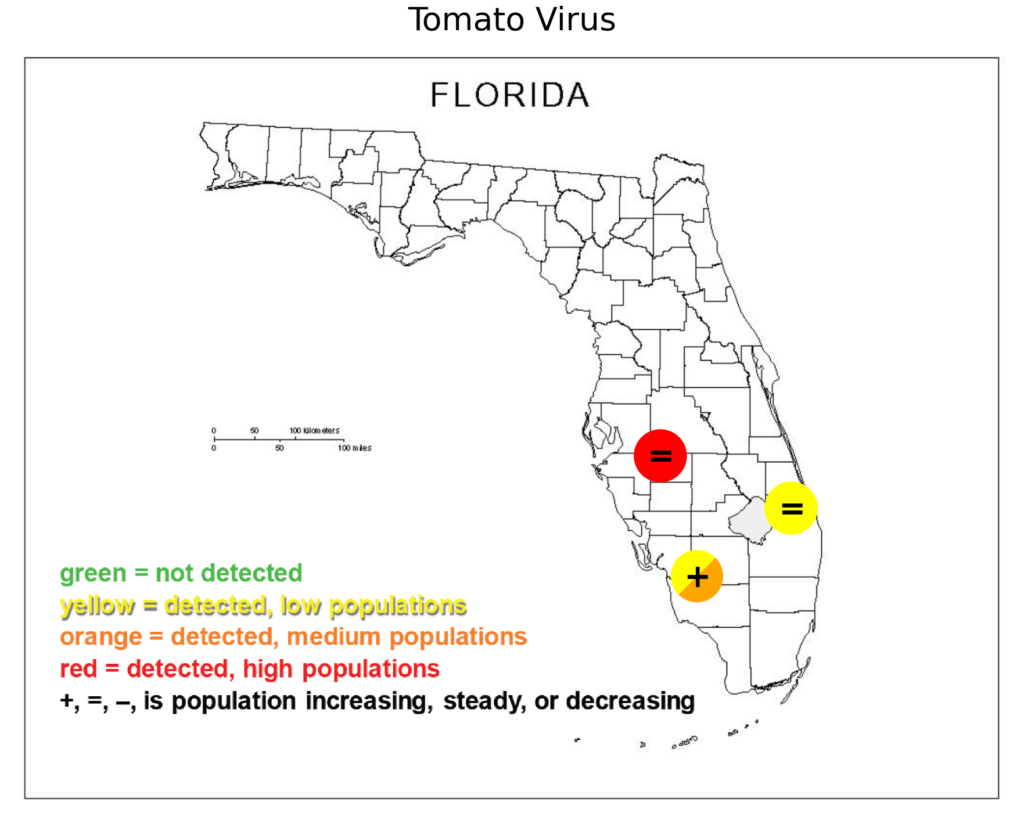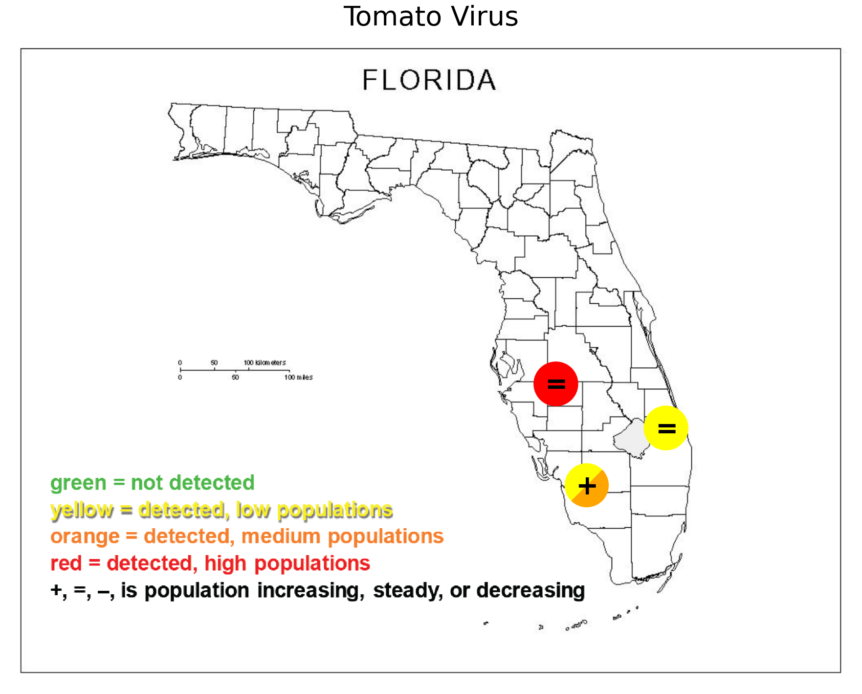Tomato viruses are on the rise across the southern Florida region, according to the South Florida Pest and Disease Hotline.

The Tomato Yellow Leaf Curl Virus (TYLCV) is up to 100% in the earliest plantings across central Florida. In Southwest Florida, some locations are reporting up to 5% of TYLCV. Along the east coast, reports of a rare plant with symptoms of Tomato Spotted Wilt Virus (TSWV) that originated from the greenhouse on transplants from Georgia.
Whitefly management is key since the pest serves as the vector of TYLCV. Growers should be aggressive with the best systemic materials early in the season. Producers should avoid planting next to older, whitefly-infested crops. Fields should be maintained weed free. Proper scouting is essential to managing the silverleaf whitefly. Field sanitation needs to be prioritized and part of an overall strategy for controlling whitefly populations.
Thrips management is key since the pest serves as the vector of TSWV. Cultural practices can be an effective means in reducing thrips, including the use of reflective plastic mulch. Growers should not implement insecticides unless they are sure about the status of the thrips on the crop. Producers need to scout fields regularly to confirm the infestation level.
There are few effective chemical controls for thrips, including Radiant SC, Exirel, Torac, Assail and Sivanto Prime.










